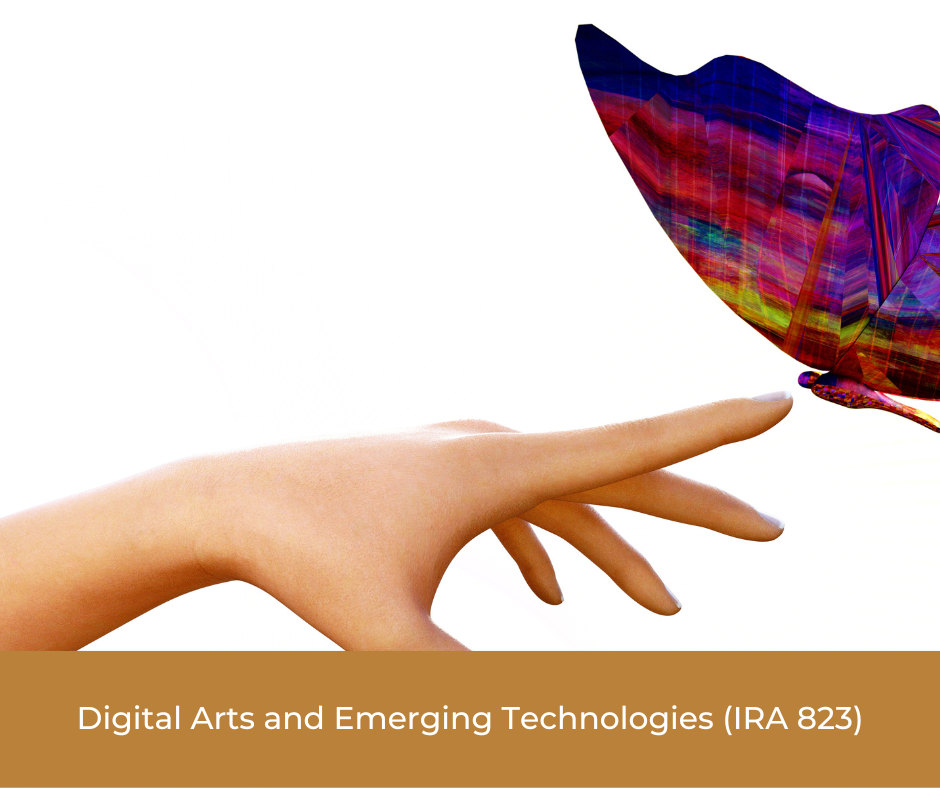Course Title: Digital Arts and Emerging Technologies
Course Description: The Digital Arts and Emerging Technologies course is an advanced exploration of the dynamic intersection of art and technology. In this course, students will engage in creative experimentation with digital media, virtual reality, augmented reality, and other emerging technologies. They will explore how these technologies can be harnessed to expand the boundaries of artistic expression and engage with contemporary artistic practices.
Outline of Major Content Areas:
- Digital Art Creation and Manipulation:
- Techniques and tools for creating digital artworks.
- Exploring digital media, including image editing, digital painting, and 2D/3D animation.
- Interactive Art and Installations:
- Concepts and methods for designing interactive art installations.
- Hands-on experience in creating art pieces that respond to user interactions or environmental factors.
- Virtual and Augmented Reality in Art:
- Understanding the principles and creative potential of virtual reality (VR) and augmented reality (AR) in art.
- Developing VR and AR art projects that immerse viewers in a digitally enhanced environment.
- Art and Artificial Intelligence:
- The integration of artificial intelligence (AI) in artistic creation.
- How machine learning and AI can be used to generate, manipulate, or interpret art.
- Practical Projects:
- Collaborative projects that enable students to create digital and interactive artworks, often in partnership with technology and media experts.
- Exploration of innovative and experimental artistic practices through hands-on projects.
Course Learning Outcomes:
Upon successful completion of this course, students will:
- Digital Art Proficiency: Demonstrate proficiency in creating and manipulating digital art, utilizing various software tools and techniques.
- Interactive Art Skills: Develop the skills to design and create interactive art installations, fostering engagement and participation from viewers.
- Virtual and Augmented Reality Competence: Gain competence in the creation of immersive experiences using virtual reality (VR) and augmented reality (AR) for artistic expression.
- Artificial Intelligence Integration: Explore the integration of artificial intelligence (AI) in the creation, manipulation, or interpretation of art, allowing for innovative and automated artistic processes.
- Collaborative Creativity: Collaborate effectively with technology and media experts to produce unique and innovative digital and interactive art projects.
Methods for Assessing Student Learning:
Assessment of student learning in this course will encompass a variety of methods to evaluate their creative and technical capabilities:
- Digital Art Projects: Evaluation of students’ digital art projects, including their technical proficiency, creativity, and ability to experiment with various digital media.
- Interactive Art Installations: Assessment of students’ design and implementation of interactive art installations, focusing on user engagement, innovation, and technical execution.
- Virtual and Augmented Reality Projects: Review of students’ virtual and augmented reality art projects, with attention to immersive qualities and creative use of these technologies.
- Artificial Intelligence Integration: Evaluation of the application of artificial intelligence in students’ artworks, including their understanding of AI concepts and the effectiveness of AI integration.
- Collaborative Projects: Assessment of collaborative projects in terms of teamwork, interdisciplinary collaboration, and the successful blending of art and emerging technologies.
Through these assessments, students will not only develop their creative and technical skills but also gain a deeper understanding of how digital arts and emerging technologies are shaping contemporary art practices.
